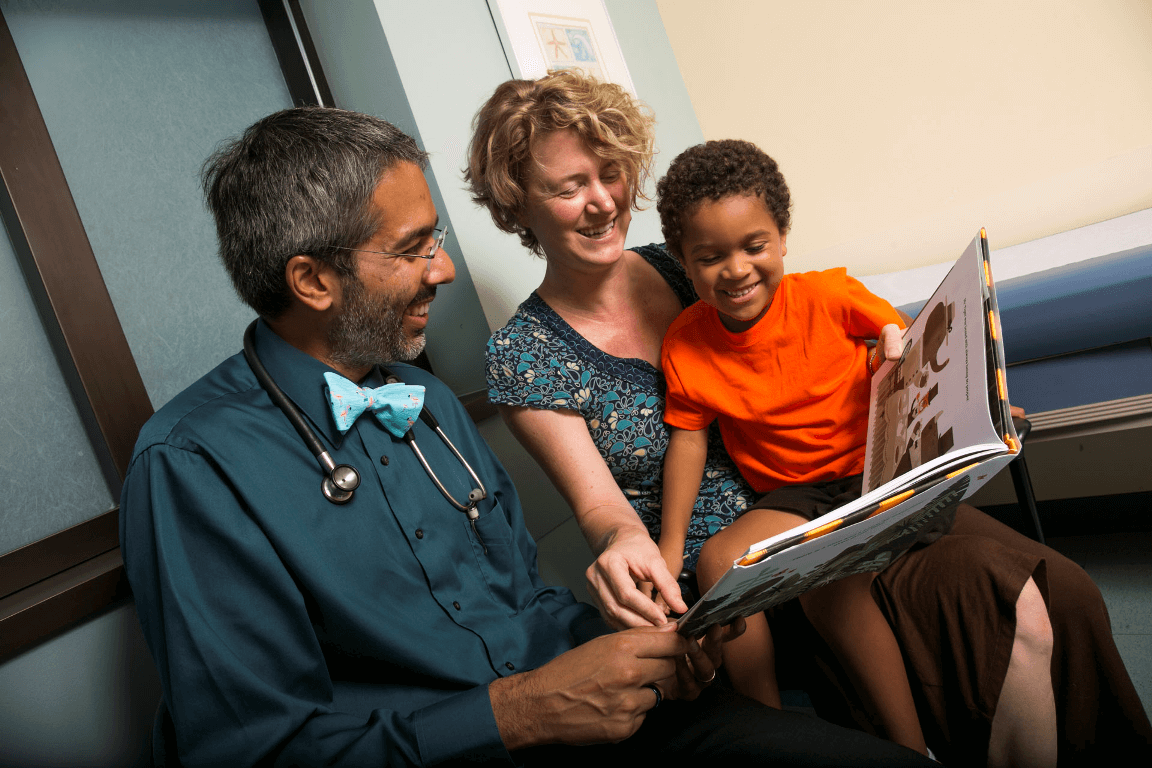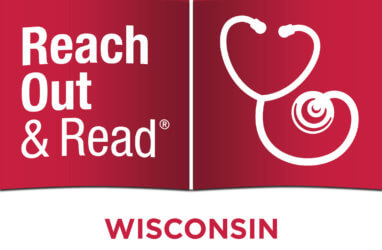As families across the state practice #SaferAtHome and cope with the unexpected epidemic of COVID-19, Reach Out and Read Wisconsin wants to add our voice to the mix and provide a list of online activities for children and families. We recognize how stressful this time can be for parents and kids, and we hope this list of resources encourages exploration, learning, creativity, social connection and a little bit of fun.
We believe that the Reach Out and Read mission is as powerful and as important as ever during these challenging times. One of the best ways parents can engage with their children and foster their child’s development is through daily interactions like reading aloud, talking, singing and playing. Many parents are now juggling working from home in addition to family responsibilities, caring for relatives and balancing self-care. We want to help you make the most of your time together as a family and provide reputable, educational options for kids who may not be in school.

Educational videos and resources for children
• Brain Pop educational videos for kids
• National Geographic for Kids
• Lunch Doodles with children’s author Mo Willems
• Reach Out and Read combined resources from National Center
• Virtual children book readings – separated by ages
Live streams of animals from around the world
• Monterrey Bay Aquarium
• Houston Zoo
• Tembe Elephant Park KwaZulu-Natal, South Africa
Resources for parents and adults (some may be appropriate for families to share together)
Video chat with family and friends
• FaceTime: allows multiple iPhone users to video chat (everyone must have iPhone)
• Skype: allows up to 50 people for video calls
• Zoom: set up a free zoom account to video chat
Note: Please allow for a little extra time before the first call to download the software on to your computer.
Stream movies and shows with friends/family:
• Netflix Party: Only for Google Chrome on laptops and desktop computers
• Hulu with Me: Works with Google Chrome and Firefox
Online games for older kids and adults
• Telestrations game
• GamePigeon games
o Play games like Uno, Battleship and more with the free Game Pigeon app. Only available for Apple iPhone and iPad
• Zoom: Use the “whiteboard” feature in screen sharing mode to play games like Hangman
• Jigsaw puzzles: Invite friends/family to work on a jigsaw puzzle together
• Crossword puzzles
• Duolingo, learn a new language. Available for Apple, Android and online
Online concerts
• Instagram live concerts – check out this article for upcoming artist performances on Instagram
• NPR’s Tiny Desk Concert Series
• YouTube’s #TogetherAtHome series
Self-care
• Information about handling stress and anxiety from the CDC
• Live, guided meditations every day at 3 p.m. EST from Ten Percent Happier
• Check out this article from Good Housekeeping for 25+ free, live stream workouts from gyms like Orangetheory and Barry’s
Please remember this is an unprecedented event and it is okay to feel a mix of emotions each day. Be kind to yourself and remember, we are all in this together!











